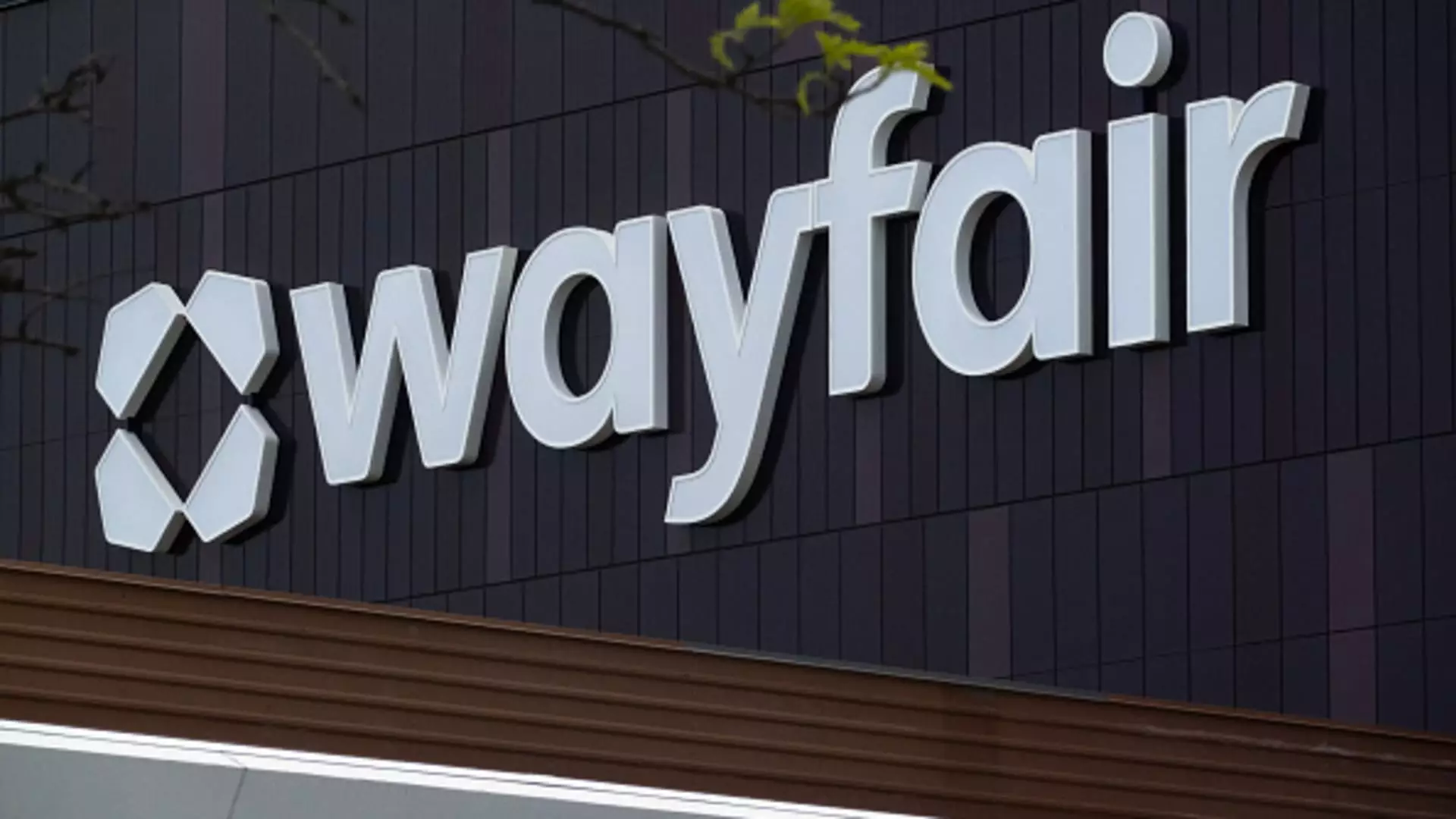Online home goods giant, Wayfair, has faced a significant sales decline in its fiscal second quarter, with its CEO describing the situation as “unprecedented” and drawing parallels to the 2008 financial crisis. The company’s credit card data indicates that the current correction in the home goods category mirrors the magnitude of the decline experienced during the peak of the financial crisis. Customer spending on home goods remains cautious, leading to a slowdown in sales.
Wayfair fell short of Wall Street’s expectations in the second fiscal quarter in terms of both earnings per share and revenue. The company reported earnings per share of 47 cents adjusted compared to the expected 49 cents, and revenue of $3.12 billion against expectations of $3.18 billion. Despite a slight improvement in losses compared to the previous year, sales declined by about 2% from the same period in the previous year.
For over a year, home goods companies like Wayfair have been struggling due to sluggish demand caused by factors such as stagnant housing market conditions and high-interest rates. The reduced demand for new homes has translated into decreased furniture purchases by consumers. Additionally, with inflation concerns, consumers are being more selective in their discretionary spending, favoring options like dining out, clothing, and travel over home goods purchases.
To attract customers and drive sales, Wayfair has resorted to offering discounts and promotions. The company does not anticipate a recovery in the home goods category until interest rates are lowered and the housing market improves. Despite the challenges, Wayfair’s management remains optimistic about the future, with hopes pinned on potential interest rate cuts and an upturn in the housing market as indicated by Federal Reserve Chair Jerome Powell.
Wayfair has undertaken significant cost-cutting measures, including mass layoffs, to align its cost structure with the current state of its business. While profitability has been a challenge for the company, the recent quarter showed improvement in free cash flow generation and adjusted EBITDA, marking the best performance in three years. Wayfair aims to achieve substantial growth in profitability despite the ongoing sales challenges, reflecting a long-term commitment to financial sustainability.
Wayfair’s struggles reflect the broader challenges facing the home goods industry as a whole. The company’s ability to navigate these challenges, adapt to changing market conditions, and innovate in its approach to customer engagement will be crucial in determining its future success. With a focus on financial resilience, cost management, and strategic planning, Wayfair aims to weather the current storm and emerge stronger in the highly competitive home goods market.

